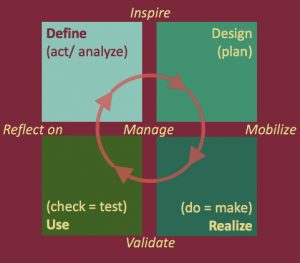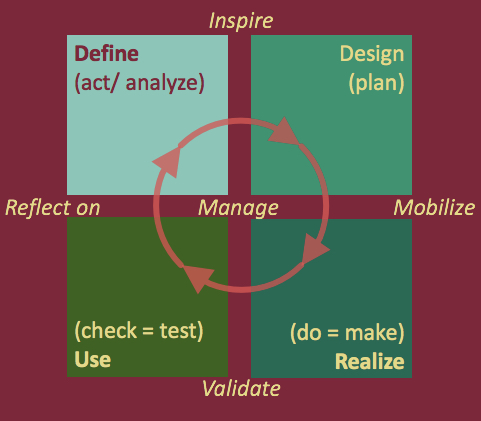 The quality you get delivered in construction, rarely meets your expectations and desires. Why is that? I have studied this strange reality for years and the reason why is just as simple as it is shocking. They learn nothing and always start at the beginning, time and time again. They are specifically the people who ensure that the design is actually realized, the contractor first.
The quality you get delivered in construction, rarely meets your expectations and desires. Why is that? I have studied this strange reality for years and the reason why is just as simple as it is shocking. They learn nothing and always start at the beginning, time and time again. They are specifically the people who ensure that the design is actually realized, the contractor first.
A company that provides quality meets a number of characteristics. Such a company works systematically, pursues the so-called Deming circle and learns from its points of improvement. Builders and consultants work differently and above all do NOT work together to integrate quality! That certainly is not in your best interest as a user. Therefore Briqs tirelessly pleads for a turnaround in their thinking and doing.
What Deming devised…
You have an idea, make a plan for that idea, execute the plan and you check the result with the idea. The goods, you maintain or develop further. What is not good, you change. You secure that change, like any new knowledge. On the basis of these experiences, you start an activity again, and so on and so forth. Deming has two other starting points:
- You go through this circle together with a whole team, again and again.
- You keep in contact with each other during the process and meet again afterwards. So you share mutual expectations and what you have learned from each other.
- You store, share and validate the collected knowledge continuously.
So the core of Deming is continuity. Continuity in the actions and in the involvement of people in the phases PLAN – DO – CHECK – ACT. And then, this circle continues with REACT. You register the lessons learned for all people involved, earlier and later on in the process. Within sectors various parties in construction do work with the Deming circle, ISO 9001, Six Sigma and Total Quality Management (TQM). But that kind of continuity is lacking between the sectors.
… and what builders and consultants do
The building process has a number of hard fault lines between planning and execution and the specialists involved. Such as the designer, the contractor and managerial supervision. They work separately and consecutively and regularly show little respect for each other’s work. Their interests and business models simply lie too far apart. A clarification based on documents.
The designer / architect, together with other consultants, makes a first and a final draft based on your schedule of requirements. Then comes the technical development of the design to the specifications and working drawings. Then the planning phase ends and we move on to the phase of actually constructing the building. At this point, there is a sharp break in the process. Once the design is translated into a technical description, the schedule of requirements simply drops off the table. The working drawings and technical specifications together form the basis of the contract between client and main contractor. On that basis the contractor buys products and puts other specialists / sub-contractors, like the installation technician, to work. They each make their own part of the construction.
The interpretation of the contractor
The main contractor who actually realizes the physical construction, does not know the original schedule of requirements. He works from totally different documents and his personal interpretation of those documents. This interpretation is what is delivered to you and in the transfer the inspection papers are based on what you have got and not on what you have ordered. Another fact is that contractors earn the most with additional work. They provide limited guarantees and only in the short term. After completion, they are not responsible anymore and very difficult to be held liable. All these current facts are not in your best interest.
Money gone or back if not satisfied?
If you are not satisfied with an ordinary product, you return it. That is exactly how it should be in construction! With that we move from a construction contract to a purchase contract. The builder constructs something, offers it to you and you only buy it if it really meets your demands. I bet that builders and consultants will also start working systematically, quality improves continuously and customers are more satisfied! There already are several cautious experiments in the Netherlands. A good example is the transformation of an office building to starter homes by housing corporation Jutphaas in Nieuwegein. Jutphaas talked in advance with the builder about that they would only buy the homes if they meet the conditions previously set. The wishes of the actual users are an important part of that. Only builders who are willing to work like this will survive and even grow. That is one of Briqs’ strongest convictions.
Take the next step and share your experiences
Do you want to take a next step? Come to the FREE* Masterclass. We will work with practical tools to instantly implement the actions of my ebook in your organizational, fiscal or financial projects and organization.
Join the conversation
Do you know how to build that new way and what you need? What are your experiences in the quality of your completed building? Share it in the comments below.
To your health and wellbeing,
Remko Zuidema
This post is also available in: Nederlands



